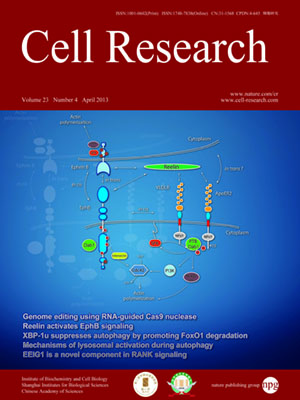
Volume 23, No 4, Apr 2013
ISSN: 1001-0602
EISSN: 1748-7838 2018
impact factor 17.848*
(Clarivate Analytics, 2019)
Volume 23 Issue 4, April 2013: 524-536
ORIGINAL ARTICLES
Early estrogen-induced gene 1, a novel RANK signaling component, is essential for osteoclastogenesis
Han Kyoung Choi1, Hye Ri Kang1, Eutteum Jung1, Tae Eon Kim2, Jing Jing Lin1 and Soo Young Lee 1,2,3
1Division of Life and Pharmaceutical Sciences, Ewha Womans University, Seoul 120-750, Korea
2Department of Bioinspired Science, Ewha Womans University, Seoul 120-750, Korea
3Department of Life Science and the Research Center for Cellular Homeostasis, Ewha Womans University, Seoul 120-750, Korea
Correspondence: Soo Young Lee(leesy@ewha.ac.kr)
The receptor activator of NF-κB (RANK) and immunoreceptor tyrosine-based activation motif (ITAM)-containing adaptors are essential factors involved in regulating osteoclast formation and bone remodeling. Here, we identify early estrogen-induced gene 1 (EEIG1) as a novel RANK ligand (RANKL)-inducible protein that physically interacts with RANK and further associates with Gab2, PLCγ2 and Tec/Btk kinases upon RANKL stimulation. EEIG1 positively regulates RANKL-induced osteoclast formation, likely due to its ability to facilitate RANKL-stimulated PLCγ2 phosphorylation and NFATc1 induction. In addition, an inhibitory peptide designed to block RANK-EEIG1 interaction inhibited RANKL-induced bone destruction by reducing osteoclast formation. Together, our results identify EEIG1 as a novel RANK signaling component controlling RANK-mediated osteoclast formation, and suggest that targeting EEIG1 might represent a new therapeutic strategy for the treatment of pathological bone resorption.
Cell Research (2013) 23:524–536. doi:10.1038/cr.2013.33; published online 12 March 2013
FULL TEXT | PDF
Browse 2190


